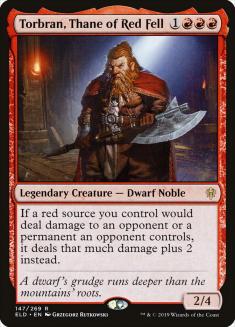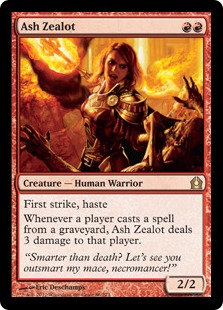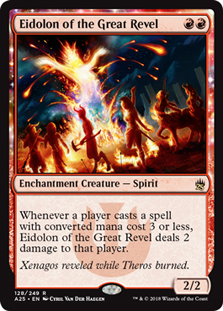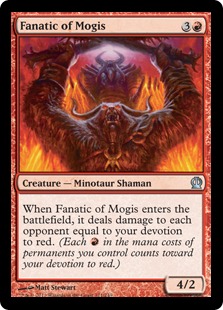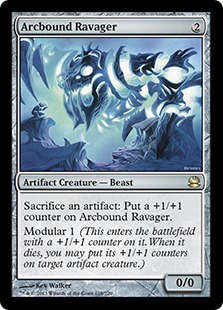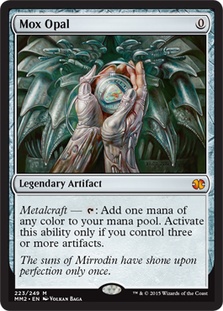Hello and welcome to the latest installment of Sullivan’s Satchel. As I mentioned during the recent broadcast and on my Twitter feed, the column has gone through something of an overhaul. My DMs are now open, so you can send your questions over there along with the more traditional [email protected]. This experiment has been both fruitful (lots of questions to pull from) and tedious (lots of questions from you people to pull from), but on the balance I think it’s been a net-positive and believe it will continue as such for the foreseeable future. The DMs take a different shape from the more long-form answers, as will become evident below, but I like having the range.
@Afdbadge115 asks:
Patrick, As a long time red player, just curious on your thoughts for Pioneer red aggro. I’ve been playing it for awhile, just curious to hear your thoughts. What list you would play today, and any sideboard things you would like or consider with how the metagame is. Thanks again for your time.
The deck seems okay to me. I’m guessing you’re more or less flipping coins with a lot of the format’s most popular decks, and if the Inverter decks become more inbred to fight one another (specifically more copies of Narset, Parter of Veils and Mystical Disputes in the main) Red’s position may become even stronger. Some scattered thoughts:
- I have no interest in Torbran, Thane of Red Fell. In absolute terms, it only seems strong in the mirror and even then only in Game 1, when its value deteriorates against Lava Coil and Chandra, Torch of Defiance. I’m told it helps you in matchups that are about speed but I’m suspicious of that reasoning when it’s so unlikely that you curve out with threats and then cast Torbran on Turn 4. I’m not sure if you should be playing some other four-drop (probably not) or building the deck to be much leaner, lower to the ground, with fewer lands (sounds more promising) but Torbran’s ubiquity honestly stuns me.
- I think Ash Zealot deserves more consideration. It isn’t terrible on raw rate and it’s another bit of disruption against Underworld Breach. Maybe that’s less of a consideration than it was a few months ago, but if Torbran is justified largely by helping with pure speed I think Ash Zealot deserves consideration as well.
- I think I would just play Eidolon of the Great Revel maindeck. I don’t think there are enough matchups where it is bad to outweigh how powerful it is, especially against the more popular matchups currently. If you want to play Ash Zealot + Eidolon that probably spells the end for Mutavault but most Red lists I see only play a copy or two anyway.
- If you play Eidolon + Ash Zealot I think it is worth at least exploring Fanatic of Mogis and everything that comes along with it (Boros Reckoner over something like Bonecrusher Giant, probably). Seems about as fast as Torbran at its ceiling while being much more impactful against a defensive Inverter of Truth; Ishkanah, Grafwidow; or a single removal spell.
Hello,
I recently picked up a playset of Arcbound Ravagers on the cheap in hopes of actually doing something with them in Modern. Do you think that, in a post Opal banning world, that a Ravager based strategy can succeed in the format?
Sincerely,
Steven Gulsby
Seems very unlikely to me, at least without new cards. Affinity plays a bunch of rancid cards that subsidize Arcbound Ravager and Cranial Plating. Mox Opal is so powerful alongside your good cards, and the value over replacement is so high. What do you propose swapping Opal with? You play Ornithopter and Memnite; what is the best card you don’t already play?
The upshot is that there is a lot less hate for Affinity than previously; beating Stony Silence is very different from beating Abrade, and maybe that can compensate for the loss of Opal.
I think winning via speed is off the table; you weren’t appreciably faster than the fastest Modern decks even with Opal and that card is worth at least a full turn for your most explosive draws. If you want to win via attrition/grinding (the other Ravager axis), what does your deck look like when you don’t draw Ravager?
I might sound pessimistic but it wouldn’t take much for this card to have legs again. However, the most recent build of Affinity was all about Mox Opal so I think you have to go back to the drawing board to leverage the old payoffs like Arcbound Ravager.
From @anfeardathuil:
Satchel question: How much money have you made betting on the primaries, king
Straight crushing it. Biggest hits were shorting Yang at 10% and Biden at 25% to win the primary about six months ago. Yang was relatively new, had a message that was outside the Overton Window, if he ever got any real traction the powers that be would have gotten the knives out, and online betting sites are flush with tech-savvy libertarian types who were drawn to his campaign so he had to be wildly overvalued. No way could Biden’s campaign survive over a year of Joe Biden talking anywhere near a microphone, so that was easy, too. I currently have an uncomfortably large position on “Michelle Obama does not run for president in 2020” at 90 cents to win a dollar (many, many, many, many times over) and if that one holds it will be a lucrative primary season.
My advice for any aspiring bettor on politics: no one on TV knows anything, and people think a lot of things that are essentially zero to happen are closer to five or ten percent. Most of the good action involves shorting either the “smart” consensus or the fantasies of good-hearted people.
Samuel Feldman asks:
Are you playing much Legacy these days? What decks do you like or dislike in the format?
I don’t know what “much” is these days but I dabble. I also don’t know much visibility there is on the format but I will say that Underworld Breach + Lion’s Eye Diamond is a combo, possibly a problematic one, and I don’t see a lot of discussion about it.
From Andy Hurst:
Big fan of the column / long time, first time, etc.
I started playing competitively around Odyssey Block, and I loved reading tournament reports on all the sites. Nowadays nobody writes them. What do you think explains their gradual extinction?
Thanks!
I think the crude answer is that strategy articles sell cards, while the value of a tournament report is a lot more nebulous. I’d bet there’s some truth to that. Reading a writer you respect talk at length about a card or deck with links to everything you’d want to buy is powerful, and it wouldn’t surprise me if that reason made up more than half of the motivation to move to today’s content model.
I don’t think that’s the whole story. Organized Play’s move towards more and more Constructed at the expense of Limited is informative, I think. It is harder to become emotionally connected to someone’s draft (an experience another person will never replicate) in the same way as watching a deck you like, or even hate, get piloted by the game’s best. I think tournament reports are analogous to drafts in this space; maybe there are parts that connect you to the writer but for the most part it is someone you don’t know talking about an experience you won’t have. The best tournament reports transcend this by striving to make the experience universal or have the stakes be high enough that the reader cares regardless, but this is the exception, not the rule.
In my own experience as a writer, when I’ve written a tournament report, I feel like I’m writing for myself and a handful of the people in the article, and hopefully the reader gets something out of it. When I write other content, I think about the reader’s experience the entire way through. I don’t know if I’m unique in that experience, but if it is common I think that needs to be sorted out before you see a return of the tournament report as a common part of the culture.



